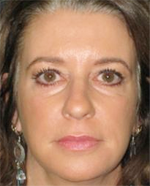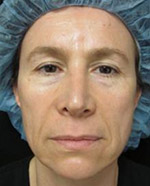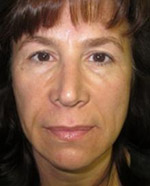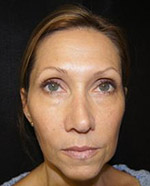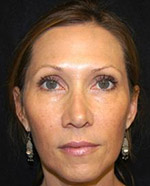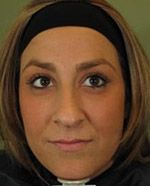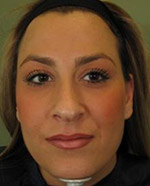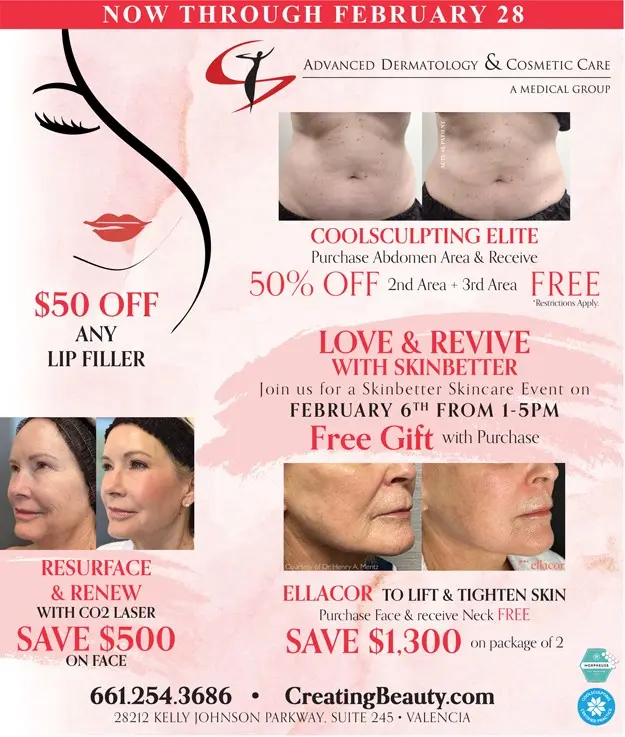Blog
Sun Safety
Posted on October 12th, 2011By Dr. Bernard I Raskin
By now almost everyone has been warned about the damage the sun can cause to your skin. But do you really know how to protect yourself properly? Wearing your sun screen at the beach or pool or on a hot sunny day is a start. But what about all the other times you are exposed to the sun’s harmful rays? UV ray exposure is accumulative, meaning even the small amount of time it takes to walk to your car, drive to school or work, or even sitting near a window, adds up over time.
There are two types of UV rays, UVA and UVB. Both can be harmful to your skin. UVA rays can pass through window glass and penetrate deep into the layers of the skin contributing to premature aging. UVB rays are the primary cause of sunburn; the rays penetrate the outer layer of the skin causing damage to the cells. Both UVA and UVB rays can play a part in the formation of skin cancer.
Don’t think that cloud cover provides you with any protection from the suns UVA rays. UVA penetrates the clouds and continues deep into the skin to cause long-term damage. A higher SPF is recommended to ensure full protection for the entire time you are exposed to the sun. Re-application is always recommended even with a waterproof formula when excessive sweating or water exposure is present.
Don’t skimp when applying your sunscreen. Most people only apply half as much sunscreen as needed, spreading it to thinly and reducing the effectiveness of the product by 50%. The average size adult should be using one full ounce of sunscreen over their entire body. Sunscreen should always be applied at least 45 minutes prior to sun exposure to allow the sunscreen to be fully effective.
Try to avoid sun exposure from 10am until 4pm that is when the suns damaging rays are the strongest. If you have to be outside during this time try and cover up as much exposed skin as possible. A wide brimmed hat, sunglasses, long sleeves and pants are recommended.
Keep an eye out for any changes in your skin, like new spots or changes in existing spots. See your dermatologist annually for a full body check.
For more information contact Advanced Dermatology & Cosmetic Care at 661.254.3686 or visit www.CreatingBeauty.com or MohsSurgeryCenter.org.
Skin Resurfacing
Posted on October 12th, 2011By Bernard I. Raskin
Looking to get your glow back? Skin resurfacing just might be the solution. Time, sun damage, free radicals, all of our skins enemies can steal that fresh faced glow that makes us appear more youthful. There are many different ways to resurface the skin and choosing a method can be overwhelming. Depending on what kind of damage you have or how severe the damage is can help in the decision making process.
Microdermabrasion is a great treatment for almost anyone. This treatment is a physical exfoliation that gives a light polishing to the skin helping with pigmentation, acne, scarring, and superficial lines.
The Vitalize Peel is an intensive Retin-A peel that can achieve dramatic improvements in superficial lines and congested pores, restoring your skins natural radiance. This unique treatment is excellent for clearing acne breakouts, and helps to lighten age spots, leaving your skin smooth and soft to the touch.
The Melanage Peel is a Hydroquinone and Retinoid masque for the treatment of hyperpigmentation or pigmented blemishes on the skin. It is a superficial peel designed to improve the texture and appearance of hyperpigmented skin and involves a masque and an at-home regimen.
The Erbium laser removes the top layers of skin, reliably, predictably, and precisely. By removing the top layers, the skin is smoothed and a softer texture results. Removing the top layers also stimulates new collagen to form under the skin helping to permanently improve wrinkles. Color problems are also improved. This light laser zaps away a few fine layers, leaving behind a softer, smoother skin.
The CO2 is possibly the best treatment to address the most severely damaged skin. This laser treats pigmentation, lines and wrinkles, tightens skin and stimulates collagen. CO2 laser resurfacing is also good for acne scars. CO2 laser is used to remove areas of damaged or wrinkled skin, layer by layer. The procedure is most commonly used to minimize the appearance of fine lines and wrinkles, especially around the mouth and the eyes. However, it is also effective in treating facial scars or areas of uneven pigmentation.
All of these treatment options will help restore a more youthful appearance, and to keep your skin fresh and glowing we always recommend protecting the skin from the sun with sunscreen and protective clothing.
For more information please contact Advanced Dermatology & Cosmetic Care at 661.254.3686 or visit www.CreatingBeauty.com.
Skin Lightening Agents
Posted on October 12th, 2011By Bernard I. Raskin, M.D.
As long summer days come to an end some of us may be noticing a few new brown spots where there weren’t any before. First and foremost we always suggest you see your dermatologist to determine the nature of these spots. If in fact these are diagnosed as hyperpigmentation or melasma then a skin lightening program can help fade these spots away.
There are several ingredients that help remove undesired pigment. Hydroquinone has been the most widely and successfully used skin lightening agent for the treatment of hyperpigmentation. Hydroquinone (HQ) treats hyperpigmentation on a cellular level by inhibiting tyrosinase. Tyrosinase is a copper-containing enzyme in plant and animal tissue that catalyzes the production of melanin, or dark pigments found in the skin. HQ is available over the counter in strengths up to 2%, prescription strengths of HQ are usually 4% or higher as determined by your physician.
Kojic acid is a non prescription strength tyrosinase inhibitor, it is used both topically as a skin lightening agent and is often more effective when used in combination with other ingredients such as vitamin C.
Derived from natural sources such as fruits and vegetables, topical vitamin C is another great ingredient to look for in a skin lightening agent. Vitamin C and stable vitamin C derivatives such as L-ascorbic interfere with pigment production as well as having the ability to lighten different types of pigmentation.
Glycolic acid is another important cosmeceutical (a cosmetic product claimed to have medicinal or drug-like benefits) that has skin lightening properties. Glycolic acid shortens the cell cycle so that pigment is lost more rapidly. Peels with a high concentration of glycolic acid that remove the superficial layers of the skin have been found to enhance the penetration of other skin lighteners such as hydroquinone.
As skin lightening creams work well for most people, sun exposure can significantly reverse the effects. It is strongly recommended that you apply sun screen daily and wear protective clothing when possible.
While all theses agents produce skin lightening affects on their own, studies show that using them in combination can be more affective. Skin lightening creams containing these ingredients are available in prescription and non prescription strengths. See your dermatologist to determine if a skin lightening cream is right for you.
For more information please contact Advanced Dermatology & Cosmetic Care at 661.254.3686 or visit www.CreatingBeauty.com.
Skin Cancer Awareness
Posted on October 12th, 2011By Bernard I. Raskin, MD
There are types of minor skin cancers, and one major type. The minor skin cancers are known as Basal Cell and Squamous Cell cancers. The major skin cancer is Melanoma. Almost all skin cancers are due to sun exposure.
Basal Cell is the most common type of skin cancer, and approximately 2 million people develop one each year. People who get one basal cell cancer are more prone to develop additional ones. These occur on any sun exposed area, although they can occasionally develop on non sun exposed regions. They are felt to be related to sun exposure that occurred many years ago. They have characteristic qualities of a pearly bump with tiny blood vessels on it, but are often less obvious so biopsies are often necessary. Basal Cell won’t metastasize, but it grows locally and sends out roots into the tissue under the skin.
Squamous Cell Cancer is less common. This cancer increases in frequency with increasing sunlight over your lifetime. That means the sunlight you get today or tomorrow contributes to new cancers. Therefore, avoiding sunlight reduces your risk of squamous cell cancer developing. In Australia a study showed that people who begin regularly wearing sunscreens and avoiding sunlight had 60% fewer skin cancers over the next five years compared to people who didn’t change their habits. So squamous cell carcinoma risks can be reduced at any age by preventing sunlight. That is good because squamous carcinoma can occasionally metastasize.
Melanoma is the major skin cancer. It too is seen more frequently in sunny climates or with an individual history of significant sun exposure. Caught early it is almost 100% curable, but caught after it has developed roots, and the cure rate drops to 30%. A person dies in the US about every 8 or 10 minutes from melanoma (36,000 deaths per year). This makes melanoma one of the top several skin cancers causing death, and most of the deaths are preventable especially if the diagnosis is made early.
For more information regarding skin cancer awareness please contact Advanced Dermatology & Cosmetic Care at 661.254.3686 or visit www.CreatingBeauty.com.
Sculptra Aesthetic “Anti-age for the modern age”
Posted on October 12th, 2011By Bernard I. Raskin, M.D.
At Advanced Dermatology and Cosmetic Care our expertly trained staff uses Sculptra in a very unique and cutting-edge manner. Over the past decade, we have learned that facial aging is not just sagging but rather a combination of volume loss, gravitational laxity, and skin changes. Sculptra is a collagen stimulator whose properties allow for a natural, gradual and discreet facial rejuvenation, which is why it is so popular among celebrities. Unlike other fillers, Sculptra works by stimulating the body to produce its own collagen that reverses the signs of aging by restoring facial volume loss. Sculptra is used to contour and reshape hollows and depressions in the cheeks, temple, laugh lines and jaw lines (jowls, marionette). At Advanced Dermatology and Cosmetic Care our staff has injected numerous patients with Sculptra and has had tremendous outcomes with great patient satisfaction in men and women.
The injection procedure is completed in office and typically requires three to six treatments spaced about a month apart. Each treatment usually takes around 20-30 minutes, and allows the patient to return home or to work almost immediately after the treatment. Most normal activities can be resumed as well.
Hands are a telltale sign of age. By utilizing a combination of Sculptra, skin resurfacing and pigment targeting lasers, we can reverse decades off your hands restoring youthful volume, removing unwanted pigment and softening the look of tendons and veins. The rejuvenative effects can be particularly dramatic.
We are pleased to offer this new facial anti-aging option in our office. Please call us now to schedule your complementary consultation to learn more and discuss if Sculptra Aesthetic is right for you.
For more information contact our office at 661.254.3686 or visit our website at www.CreatingBeauty.com.
Damage Control
Posted on October 12th, 2011By Bernard I Raskin, M.D.
By now we all know how important it is to protect our skin from the suns damaging rays. But did you know that photodamage begins when the first UV ray strikes the skin? Freckles may seem cute on a toddler, but they are in fact the first signs of sun damage, and all sun exposure is cumulative. Though photodamage may not be apparent on a younger person, special UV cameras are able to detect UV damage and can document progressive damage through the years.
There are ways to possibly reverse or reduce sun-induced photodamage including IPL or intense pulsed light. IPL reduces both red and brown signs of aging as well as improving the collagen degradation associated with photodamaged skin. The IPL hand piece delivers high intensity pulses of broadband light (different wavelengths and energies) that is different from the narrow band light of lasers. Because it is broadband, it can treat several problems at once. IPL is non-ablative meaning that is does not damage the surface of the skin. The intense light is delivered to the deeper parts of the skin (dermis) and leaves the superficial aspect of the skin (epidermis) untouched. For the IPL to be effective, it must be used at high settings best performed under physician supervision.
PDT photorejuvenation is another technique used to improve photodamage. PDT is a procedure where a photosensitizer cream is applied to the area followed by a light treatment such as IPL or V Beam. The photosensitizer commonly used in this procedure is called aminolevulinic acid. The substance is applied and absorbed by the sun-damaged skin and magnifies the impact of IPL
or V Beam light energy creating even more improvement than IPL or V Beam alone. PDT also destroys pre cancer cells, so beauty and cancer prevention occur at the same time!
Alternatives to laser/light treatments for the treatment of sun-damaged skin include microdermabrasion and/or chemical peels. Microdermabrasion is a superficial exfoliation. Most patients treated with microdermabrasion report improvement in acne, uneven skin color, and skin texture, however multiple sessions are needed. Chemical peels are used for the treatment of photoaging, wrinkles, scarring, acne, and discoloration. Different strengths of peels produce controlled injury to the skin promoting the growth of new skin with an improved appearance. Peels can be used with microdermabrasion. The beauty of peels is that many strengths and types are available providing your physician with a range of options to maximize improvement or combine with other methods for detailed facial enhancements.
Though there are many ways to treat photodamage, the best way to keep your skin looking young is with photoaging prevention. Careful sun protection begins with using a sunscreen with an SPF of 30 everyday, wearing protective clothing when in the sun, and trying to avoid the sun between the hours of 10am and 4pm when the suns rays are the strongest.
For more information contact Advanced Dermatology & Cosmetic Care at 661.254.3686 or visit www.CreatingBeauty.com
PDT with Levulan®
Posted on October 12th, 2011By Bernard I Raskin, MD
PDT stands for photodynamic therapy and is a combination of a light sensitizing topical drug called Levulan® and a light/laser. This method can produce outstanding results in the treatment of pre-cancerous lesions or AK’s, acne, sun damage, or as a great skin rejuvenating treatment.
First Levulan® is applied shortly before the treatment; this provides deeper and more complete light penetration. After PDT patients usually experience a couple of days of swelling and crusting. Often 2 or 3 PDT treatments take the place of 5 or 6 IPL/Photofacials. Your provider will choose the treatment that is most suitable for you.
The beauty of this treatment is the reduction of breakouts, broken capillaries, redness, flushing, brown spots, and pigmentation, also many signs of Rosacea may be improved. Most people with discoloration, blood vessels, or aging skin also may benefit. This revved up version of the Photofacial gives faster results with the added benefit of shrinking pores and reducing acne breakouts.
Photodynamic therapy with Levulan® is also a great treatment for Actinic Keratosis or AK’s. Actinic Keratosis , is also known as Solar Keratosis because it is the result of prolonged exposure to sunlight. AK’s are small crusty, scaly or crumbly bumps or horns that arise on the skin. The base of the AK might be light or dark, tan, pink, red, a combination of these, or the same color as your skin. The scale or crust on these is horny, dry, and rough and it is usually recognized by touch. Occasionally the AK may itch or produce a pricking or tender sensation. It can also become inflamed and surrounded by redness. PDT treatment selectively destroys Actinic Keratosis, causing little damage to surrounding normal skin, although some swelling and redness often occurs. Most insurance carriers will cover PDT for the treatment of Actinic Keratosis.
Finally, patients should avoid exposure of the photosensitive treatment sites to sunlight or bright indoor light prior to and at least 48 hours after photodynamic therapy. Exposure may result in a stinging and/or burning sensation and may cause erythema (redness) or edema (swelling) of the lesions. Sunscreens will not protect against photosensitivity reactions caused by visible light.
There are many effective methods to eliminate AK’s, sun damage, acne, and redness, you and your doctor should decide together the best course of treatment.
For more information regarding PDT with Levulan® please contact Advanced Dermatology & Cosmetic Care at 661.254.3686 or visit www.CreatingBeauty.com.
Optimizing Results
Posted on October 12th, 2011By Bernard I. Raskin, M.D.
While cosmetic treatments can yield phenomenal results on their own, combining a proper post care routine can insure optimal results. Lasers have the ability to take off years of sun damage. They can reduce pigmentation, roughness, fine lines and wrinkles, scars and pore size. Lasers range in price from inexpensive to pricey so using the right products is a way to protect your investment. For patients having Laser Resurfacing treatments that are at the higher end of pricing, post skincare kits are included. For those treatments that do not include a kit, we have different kits available as well as a la carte products to fit every budget. Using the right skincare is the difference between eating fast food and eating a healthy diet of fruits, veggies, and whole grains; our bodies can get by on fast food, but to live life to the fullest we need to eat properly. Some proper post care products would include a gentle cleanser so as to not cause any undue irritation that could lead to irregular pigmentation. A great sunscreen is a must and it should contain Zinc. Adding in a growth factor such as TNS recovery complex will help the skin to repair and recover more quickly. At Advanced Dermatology & Cosmetic Care, we have different post procedure kits available depending on the type of laser, peel, or microdermabrasion performed. We are all about results. We want happy patients with great results and one way to get the best result is to use the right skincare.
For more information please contact Advanced Dermatology & Cosmetic Care at 661.254.3686 or visit www.CreatingBeauty.com.
Finding a Dermatologist in Los Angeles County
Posted on August 25th, 2011Choosing a dermatologist is a challenging task, but with organization and preparation it can be an easy first step to taking care of your skin’s health and appearance. You can be assured that you’re in good hands with Los Angeles County dermatologist Dr. Raskin because he uses the latest techniques and advances in the field of dermatology. He caters to patients in Santa Clarita and following areas:
- Granada Hills
- Sylmar
- Mission Hills
- Valencia
- Newhall
- Canyon Country
- Stevenson Ranch
- Castaic
- Canyon country
- Agua Dolce
- Val Verde
- Filmore
- Camarillo
- Ventura
- Oxnard
- Quartz hill
- Acton
- Piru
- Santa Paula
Visit our new Santa Clarita Dermatology Facility
Posted on August 24th, 2011We have moved to a brand new location. Our address is:
Kelly Johnson Pkwy
Suite 245
Santa Clarita, CA 91355
We look forward to seeing you. If you’re interested in setting up a consultation, please click here to contact Dr. Raskin and the team at Advanced Dermatology & Cosmetic Care





